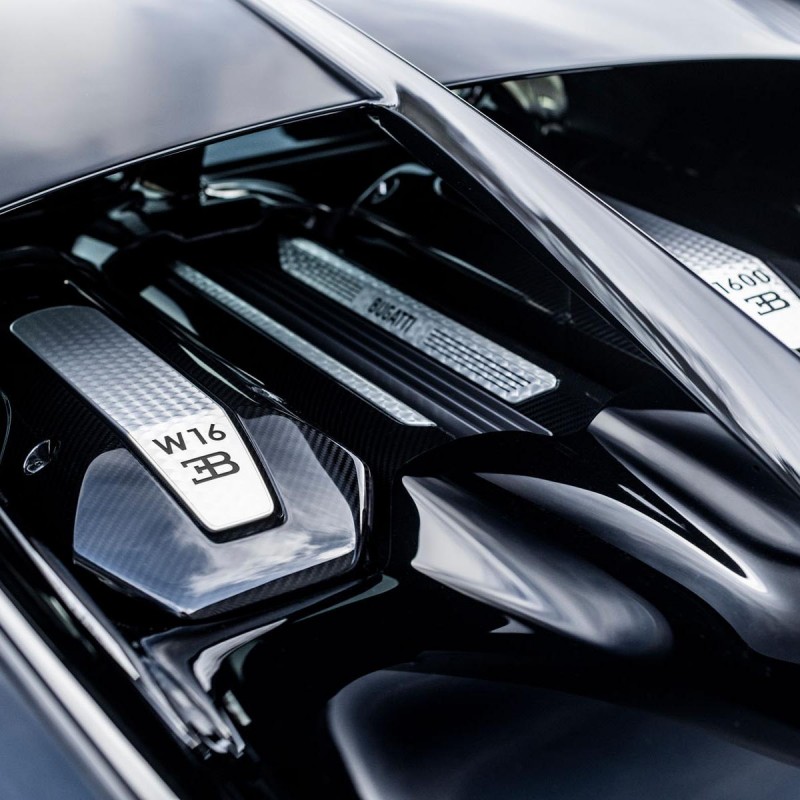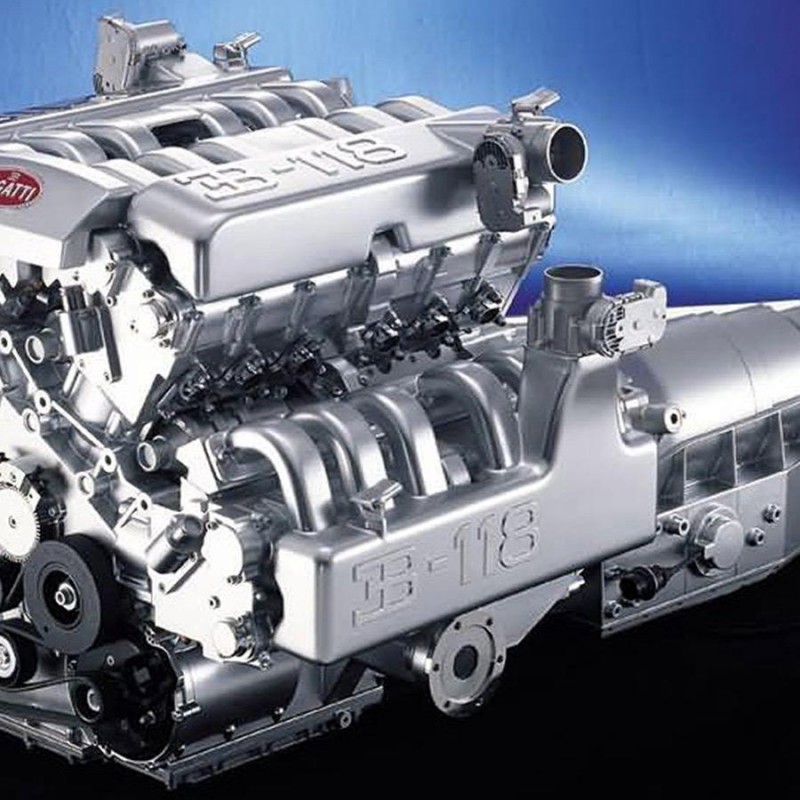The automotive industry is undergoing a significant transformation as engineers and manufacturers strive to create more efficient, powerful, and environmentally friendly vehicles. A vital aspect of this innovation is the technology embedded in modern engines. With increasing demands for fuel efficiency and lower emissions, we must examine what new technologies are used in modern engines. Advancements in materials, fuel management systems, and hybridization all play key roles in enhancing engine performance. This article provides a comprehensive overview of current engine technologies. We will uncover how they work and the benefits they offer to both manufacturers and consumers. Understanding these technologies is crucial to appreciating the evolution of modern engines.

The Shift Toward Electrification
One significant trend in the automotive industry is the shift toward electrification. Hybrid and electric vehicles lead the way for new engine technology. Understanding what new technologies are used in modern engines allows us to see how manufacturers adapt to changing consumer preferences and regulatory demands.
- Hybrid Powertrains: Hybrid vehicles combine traditional internal combustion engines (ICE) with electric motors. This setup optimizes fuel efficiency while maintaining excellent performance. The system can seamlessly switch between power sources, adapting to driving conditions for maximum efficiency.
- Plug-in Hybrids (PHEVs): These vehicles extend hybrid technology further. They allow drivers to charge the battery from an external source. PHEVs can operate on electric power alone for short distances. This feature significantly reduces fuel consumption.
- Battery Electric Vehicles (BEVs): These vehicles run entirely on electric power using large battery packs. They do not have traditional engine components but instead use electric motors to drive their wheels, eliminating emissions produced by ICEs.
- Fuel Cell Electric Vehicles (FCEVs): FCEVs utilize hydrogen fuel cells to generate electricity. By combining hydrogen with oxygen, these vehicles produce electricity to power electric motors while emitting only water vapor.
- Regenerative Braking: This technology captures energy usually lost during braking. It redirects that energy to recharge the vehicle’s battery. This process increases overall efficiency and augments the electric range of hybrid and electric vehicles.
The transition to electric powertrains has a profound impact on what new technologies are used in modern engines. The industry increasingly focuses on sustainable options.

Advanced Engine Management Systems
As engines become more complex, engine management systems also evolve to support improved performance and efficiency. These advancements are essential to understanding modern engine operations.
- Electronic Control Units (ECUs): Most modern engines use multiple ECUs to manage various functions, including ignition timing, fuel injection, and emission control. These units analyze data from numerous sensors to optimize engine performance in real-time.
- Drive-by-Wire Technology: This system replaces traditional mechanical linkages between the accelerator pedal and the throttle body. It uses electronic controls to offer precise control over engine performance. This change enhances throttle response and reduces mechanical losses.
- On-Board Diagnostics (OBD): Modern engines come with advanced diagnostic systems that monitor performance and detect malfunctions. This tech helps mechanics identify issues quickly, leading to more efficient repairs.
- Adaptive Learning: Engine management systems can learn and adapt to driving habits over time. They optimize engine settings based on individual driver behavior, allowing for personalized performance improvements.
- Tuning and Remapping: With the ability to alter engine maps electronically, owners can now adjust parameters without physical modifications. Drivers modify engine settings using tuning tools to improve power and efficiency.
These advancements in engine management systems highlight how modern engines leverage technology to enhance performance and driver pleasure.
Turbocharging and Supercharging Technologies
Forced induction technologies have rapidly advanced to significantly boost modern engine performance. These technologies help maximize small engines’ potential.
- Turbocharging: A turbocharger uses exhaust gases to spin a turbine, forcing more air into the engine. This process increases the amount of air and fuel entering the combustion chamber. Turbocharging enhances engine power without increasing its size, improving fuel efficiency and reducing emissions.
- Twin-Turbo Systems: Advanced turbocharging designs utilize two turbochargers to optimize performance. One turbo operates at low RPMs for better response, while the second assists at higher RPMs.
- Supercharging: Similar to turbocharging, supercharging mechanically forces air into the engine. However, superchargers use the engine’s crankshaft for power, providing immediate boosts without turbo lag. This makes supercharged engines responsive and powerful.
- Variable Geometry Turbochargers (VGTs): VGTs enable the turbocharger to adjust its geometry depending on engine speed. This capability reduces lag and optimizes power delivery across the RPM range, ensuring a more responsive experience.
- Wastegate Technologies: Modern wastegate designs enable better control of boost pressure. This advancement helps engines operate efficiently within their power range, enhancing performance and durability.
Turbocharging and supercharging technologies show how modern engines achieve significant power increases while maintaining or improving fuel efficiency.
Alternative Fuel Innovations
With a growing focus on sustainability, exploring alternative fuels is crucial to understanding what new technologies are used in modern engines. These innovations tackle environmental concerns while providing diverse fueling options.
- Ethanol Blends: Ethanol, derived from renewable sources, can be blended with gasoline. Flex-fuel vehicles (FFVs) can run on different ethanol blend ratios, showcasing modern engines’ adaptability.
- Biodiesel: Made from vegetable oils or animal fats, biodiesel can operate in traditional diesel engines with minimal modification. It significantly reduces emissions and relies on renewable resources.
- Compressed Natural Gas (CNG): CNG is gaining traction as an alternative fuel, popular in both passenger and commercial vehicles. It produces fewer pollutants than gasoline or diesel and operates in dedicated or bi-fuel engines.
- Propane (LPG): Liquid propane gas is another alternative fuel that burns cleaner than traditional fuels. Propane engines are commonly seen in fleet vehicles and specialized applications.
- Hydrogen: Hydrogen fuel cells present an exciting possibility for modern engines. Innovations in hydrogen storage and fuel cell technology continue to evolve, making hydrogen-powered vehicles a plausible option for sustainable transportation.
Advancements in alternative fuels demonstrate the automotive industry’s focus on reducing carbon footprints while promoting diverse energy sources.
Lightweight Materials and Engine Technologies
The demand for fuel efficiency has led to the adoption of lightweight materials in engine development. Understanding what new technologies are used in modern engines requires recognizing how reducing weight contributes to overall efficiency.
- Aluminum Alloys: Manufacturers frequently use aluminum for engine blocks, cylinder heads, and other components due to its lightweight characteristics. Reducing engine weight improves performance and fuel efficiency.
- Composites: Advanced composite materials, such as carbon fiber, are becoming more common in engine designs. These materials offer considerable weight reduction without sacrificing strength.
- Magnesium Alloys: Magnesium is lighter than aluminum and increasingly used in engine manufacturing. It aids in reducing overall weight and improving fuel economy.
- 3D Printing: This technology allows for creating complex engine components that are lightweight and optimized for performance. It minimizes material waste and manufacturing time, leading to innovative designs.
- Heat-Resistant Materials: New technologies focus on developing heat-resistant materials that can endure higher temperatures. This improvement enhances engine efficiency and durability without increasing weight.
Utilizing lightweight materials demonstrates how modern engines aim for better performance while minimizing environmental impact through improved efficiency.
Advanced Cooling and Lubrication Technologies
Effective cooling and lubrication systems are necessary for modern engines to operate efficiently and prolong engine life. These systems rely on innovative technologies to enhance performance.
- Variable Cooling Systems: Advanced cooling systems utilize sensors to monitor engine temperatures. They regulate coolant flow based on detected heat, optimizing performance and reducing energy waste.
- Electric Water Pumps: Electric water pumps operate independently of engine speed, allowing better control over coolant circulation. This capability improves overall cooling efficiency.
- Dual Oil Pumps: Many modern engines use dual oil pumps. One pump handles lubrication while the other focuses on controlling oil pressure for specific components. This separation enhances oiling efficiency.
- Oil Life Monitoring: Advanced engine management systems can monitor oil condition and determine when an oil change is necessary. This technology helps extend oil life while ensuring smooth operation.
- Advanced Lubricants: The development of synthetic lubricants enhances engine performance. These lubricants reduce friction more effectively than conventional oils, improving efficiency and reducing engine wear.
Innovations in cooling and lubrication technologies play a vital role in modern engines, ensuring optimal operating conditions and enhancing overall engine longevity.
Emission Control Technologies
As environmental regulations tighten, understanding what new technologies are used in modern engines also involves emission control systems. These technologies minimize harmful pollutants released into the atmosphere.
- Catalytic Converters: Catalytic converters are critical in reducing harmful emissions from vehicles. They convert toxic gases like carbon monoxide, hydrocarbons, and nitrogen oxides into less harmful substances before exiting the exhaust system.
- Exhaust Gas Recirculation (EGR): EGR systems recirculate some exhaust gases back into the combustion chamber. This process lowers nitrogen oxide emissions, allowing for cleaner exhaust gases.
- Selective Catalytic Reduction (SCR): SCR uses a urea-based additive in the exhaust system to convert nitrogen oxides into harmless nitrogen and water vapor. This technology is common in diesel engines to meet strict emission standards.
- Particulate Filters: Diesel engines often use diesel particulate filters (DPFs) to capture soot from exhaust gases. These filters help prevent harmful particles from entering the atmosphere.
- On-Board Diagnostics (OBD-II) Systems: OBD systems monitor engine performance and emissions, identifying issues that could increase emissions. These systems alert drivers to problems, enabling timely maintenance and repairs.
Implementing innovative emission control technologies allows modern engines to significantly reduce their environmental impact, aligning with regulatory standards and promoting healthier ecosystems.

Conclusion
In conclusion, understanding what new technologies are used in modern engines reveals a landscape filled with innovation and a commitment to improving efficiency, performance, and environmental sustainability. These changes mark the transition to hybridization and electrification, the evolution of advanced engine management systems, and the notable advances in emission reduction technologies.
As the automotive industry continues to evolve, innovations such as lightweight materials, turbocharging advancements, and alternative fuels pave the way for better performance and lower emissions. Staying informed about these technologies empowers consumers and manufacturers to embrace a sustainable approach to transportation.
Ultimately, this shift in engine technology enhances driver satisfaction while promoting a cleaner, more energy-efficient future for all.
Tags: automotive innovation, engine technology, fuel efficiency